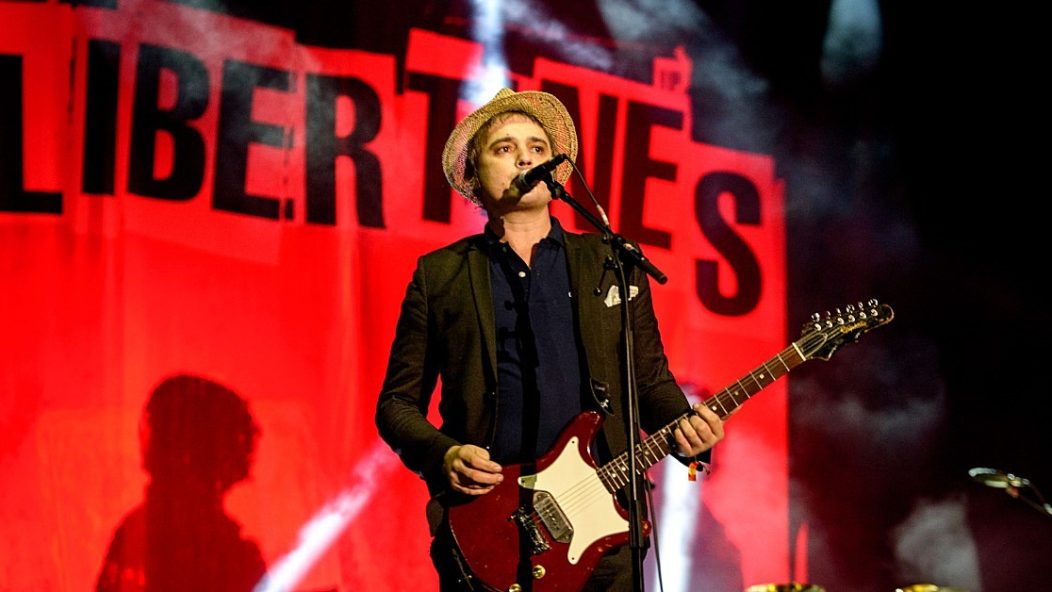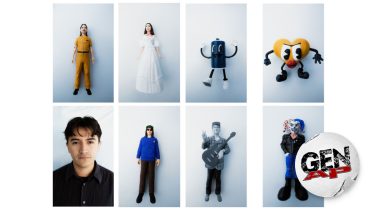
12 great standalone punk-rock singles, from the Clash to the Libertines
The seven-inch 45 RPM single was the perfect punk–rock medium, insofar as anything about a musical genre and culture as fly-by-the-seat-of-your-bondage-pants as punk can be designed. This is because it was originally rock ‘n’ roll’s perfect medium, and punk’s initial goal was reducing rock to its fundamentals. And if you restrict your presentation’s time to two minutes and 30 seconds, you’re going to compress all of your best ideas into a tight, concise package.
There are also the inherent acoustical benefits of singles, at least in their original form. You have the warmth of vinyl, added to that faster playing speed. 45 RPM already sounds hotter than a shipment of counterfeit Gucci handbags seized by U.S. Customs. But you can master everything louder on a single, thanks to the wider grooves. And punk rock is meant to be loud.
Read more: A history of riot grrrl, from “Rebel Girl” to “Racist, Sexist Boy”
One of the original punk-rock rules was value for dollar — some songs were reserved for singles and kept off the albums. Some felt that having all the singles appear on the albums ripped off the fans. This explains why, although you may find all the Sex Pistols’ A-sides on their sole actual LP release, Never Mind The Bollocks, Here’s The Sex Pistols, the B-sides strictly remained on the 45s. It’s also why certain tracks were singles exclusives, even if they appeared on later compilations or best ofs. This practice lessened as vinyl became less popular. Today, a decent number of great standalone punk singles are still released. Because there’s no thrill as electrifying as the short sharp shock of a great punk-rock single.
Here’s Alternative Press’ pick of 12 of history’s best standalone punk singles, complete with a custom playlist to enjoy as you read.
The Clash – “(White Man) In Hammersmith Palais”
This may confuse some who’ve only heard the American edition of the Clash’s debut album. Well, that was because when Epic Records finally deigned to release The Clash domestically after imports sold impressive numbers, they dropped some of the original tracklist to feature some of the singles released between it and 1978’s Give ‘Em Enough Rope. And “(White Man) In Hammersmith Palais” — the ultimate distillation of the Clash’s punk/reggae synthesis, featuring a beautiful Joe Strummer lyric about creeping fascism and punk’s commercial co-optation — was only released on seven-inch in their homeland. Had it made it onto Rope, it would have improved that album a thousandfold.
The Weirdos – “We Got The Neutron Bomb”
Like many of West Coast punk’s leading lights, L.A.’s the Weirdos assumed major record companies would come pounding at their door, as they did for Ramones or many of the English bands. Which is why much of Los Angeles and San Francisco’s crucial early punk documentation comes via independently released 45s. You might get the occasional brilliant outburst like this, a teeth-grinding scream over the weapon that killed people while leaving buildings intact, set to enormous Gibson chords. Otherwise, several LPs’ worth of material remained unreleased, perhaps recorded on demos later collected on anthologies. “We Got The Neutron Bomb” is as political as early U.S. punk got, potent enough for inclusion on any essential punk playlist.
The Avengers – “We Are The One”
San Francisco’s Avengers, led by charismatic teenage singer Penelope Houston, should have released an album. It’s criminal that they didn’t get the full-length treatment until three years after their breakup. Their 1977 debut single “We Are The One” is as definitive a punk statement as has been made, filled with the revolutionary fervor of the age, featuring some of the best guitar grind ever recorded. Blame it on Houston’s ferocious commitment in her delivery — you can hear the veins pop in her neck and forehead, and the sweat running down her back. Rebellion sublime enough to dance to.
Buzzcocks – “What Do I Get?”
No one wrote better pop songs than Buzzcocks chief Pete Shelley. His airtight melodic confections redefined punk, romance and timeless songwriting. But for all of their bright sing-song charms, Shelley’s tunes were hardly happy-go-lucky — no one got the girl or guy in his gender nonspecific compositions. Second United Artists 45 “What Do I Get?” is a perfect case in point. The protagonist is hardly a Romeo. He bemoans the lack of romance in his life over some of the most perfect high-speed guitar churn and whoa-whoa backing choruses committed to magnetic tape. Deceptively, dangerously sweet, like a razor blade hidden in an apple.
Germs – “No God”
L.A.’s Germs, led by mesmerizing death-cult-leader-in-training Darby Crash, were a glam–rock band given a nihilistic makeover. They were also punk’s most successful graduates of the musical college of on-the-job training. “No God” was the B-side to their second single, and the best extraction to date of what a charming and powerful wrecking machine they were. Played back to back with 1977’s “Forming,” it’s also an apt demonstration of how far they’d come in a year. Guitarist Pat Smear was incapable of pulling off the joking Yes quote he now slams face-first into the song’s front-end, as it crashes into a chaotic atheistic statement. Yet the chaos remains controlled, somehow.
Bad Brains – “Pay To Cum”
One of hardcore’s true opening shots, only four ex-jazz/funk musicians could have executed the blinding 500 MPH thrash of “Pay To Cum” and never derail it. Many in the day checked their turntables to make sure they weren’t playing it at the wrong speed. But no, that was the proper tempo. Really, it’s the version punks love to say they prefer. It also caused most to look onto D.C.’s Bad Brains with reverence and awe — this was a rare and powerful musical force. Don’t ask what the song’s message was, as singer H.R.’s delivery was so frenetic, he might as well have vibrated his index finger between his lips as he hummed. The actual message was, “Everything just got a whole lot faster…”
Social Distortion – “1945”
Social Distortion were a rare 1977-ish pogo-party blast, in an underground climate now awash with hardcore. It didn’t hurt that leader Mike Ness was a songwriting savant with a firm grounding in old-school rock ‘n’ roll basics. It was what helped make “1945,” an account of the bombing of Hiroshima told from the viewpoint of one of the bomber pilots, such a blast — it had a nice beat, and was easy to dance to. Beginning with samples of an air raid siren and an explosion over drummer Derek O’Brien’s frenetic beat, Ness’ scratchy bawl and the dogfight guitars create a mood of snotty majesty.
Manic Street Preachers – “Motown Junk”
Glam-punk gains a political consciousness in the second single from ‘90s Welsh Situationists Manic Street Preachers. Beginning with a Public Enemy sample and ending with one from the Skids, “Motown Junk” was likely the first example of a punk band coming to grips with hip-hop-style production techniques without trying on the musical style itself. In between was a revved-up amalgam of Cheap Trick and the Clash decrying a wave of danceable love songs then gripping the British pop charts, dubbing it all “lower-class betrayal.” Cleverly, bassist Nicky Wire underpins the chorus with a quote from the Supremes’ “You Can’t Hurry Love.”
Bikini Kill – “Rebel Girl”
Bikini Kill were the band that officially ignited riot grrrl. It therefore stands to reason they would record the movement’s most crucial anthem. Performed since 1991, the band cut and released three different versions of “Rebel Girl” in 1993, initially for the Yeah Yeah Yeah Yeah side of their split LP with Huggy Bear, then thirdly for their Pussy Whipped album later in the year. But the best version is the supercharged single they cut with Joan Jett. Producing them with a thick, loud Sex Pistols-esque sheen, Jett adds her significant rhythm guitar prowess and throaty vocals to this anthem of unabashed lesbian love and female empowerment.
The White Stripes – “Let’s Shake Hands”
“Let’s Shake Hands” was Earth’s initial introduction to the colorful and joyous universe the White Stripes inhabited. A “hallelujah”-inducing burst of secular gospel from the pen of Jack White, it’s an ode to platonic romance driven by drummer Meg White’s frenetic bashing and guitar so fuzz-drenched it sounds as if it was recorded through a broken speaker. A clipped and concise 2:04 shock wave, it has the raving spirit of Little Richard and was the first steps towards the 21st century re-popularization of garage-punk. It also serves as our first glimpse into Jack’s idiosyncratic conceptual brilliance.
The Libertines – “Don’t Look Back Into The Sun”
The fourth single from ramshackle, heart-on-sleeve British garage-ists the Libertines, “Don’t Look Back Into The Sun” is also arguably their best song. Produced into a dense, compressed shriek by ex-Suede guitarist Bernard Butler, the track heaves and breathes anxiety over the fame the quartet had just walked into. Yet it simultaneously celebrates it, with a sense of having worked hard for it and earning it. Yet even if this had been the Pete Doherty and Carl Barât-led foursome’s sole recording, it would have ensured their legend. As it is, it’s a primary cog in their ongoing romance with a mythic Britain.
The Linda Lindas – “Racist, Sexist Boy” (Live At LA Public Library)
With “Racist, Sexist Boy,” recorded live last year at the L.A. Public Library, teenage modern riot grrrls the Linda Lindas amply demonstrate raw punk’s continued vitality. Written in response to racist comments made by one of drummer Mila de la Garza’s schoolmates prior to the COVID-19 pandemic, the video of the performance became a viral sensation. Several complained online about their lack of experience, but just as many praised it, including notables ranging from Thurston Moore to Kathleen Hanna to author Viet Thanh Nguyen, who called it “the song we need now.” Even better, the Linda Lindas are including a studio version on their upcoming debut album, but this one still rocks like mad.










